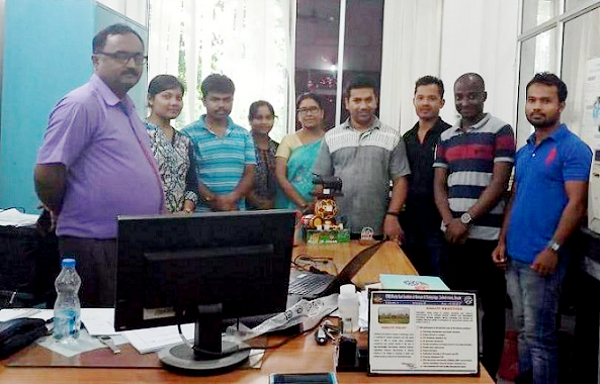Scientists at CSIR- North East Institute of Science and Technology, Jorhat, have developed a ceramic membrane with the help of a mixture of potter’s clay, stone dust and tea waste. They have tested the membrane on effluents from a textile unit and it could remove adsorptive dyes from wastewater.
Ceramic filters and membranes are commonly used in several sectors like food and beverage, drug and chemicals, waste recovery and recycling industries. Ceramic membranes can withstand frequent cleaning, harsh operating environments and situations that require continuous flows of material. They can also be regeneratedover many cycles and used forseparation of both aqueous and non-aqueous solutions. These filters areespecially useful in petrochemical processing, where it is not possible to use organic membranes.
The newly developed membrane has good thermal and chemical stabilities. It is capable of discolouring two commonly used dyes – methylene blue and Congo red -from water. The used membrane could also be regenerated by heating at 400 degrees for 30 minutes, without much loss of efficiency. Methylene blue is a toxic dye, while Congo red is a known cancer-causing agent.
” Ceramic filters and membranes are commonly used in several sectors like food and beverage, drug and chemicals, waste recovery and recycling industries. ”
“Potter’s clay from Dhekial region of Golaghat district in Assam is traditionally used by rural artisans to prepare storage pitchers for sugarcane molasses. With the advent of modern packaging practices, the art and the tradition of pottery is dwindling. We wanted to see if we can use the clay for a modern application,” explained Dr Rajib Lochan Goswamee, leader of the team, while speaking to India Science Wire.
While the potter’s clay forms the base material providing plasticity, stone dust was used as a reinforcement material and tea waste provided porosity to the membrane. “Our aim was to use waste materials from neighbourhood as far as possible to reduce costs and at the same time ensure an efficient output,” he added.
Besides Dr Goswamee, the team included Jitu Saikia, Susmita Sarmah, Jayanta J.Bora, and Bipul Das. The results of the study have been published in Bulletin of Material Science. The study was funded by Department of Science and Technology (DST).
India Science Wire
Source:VigyanPrasar
Image Courtesy:Vigyan Prasar
You may also like
-
New Heat-Based Approach To Cancer Treatment Can Reduce Chemotherapy Doses
-
Scientists Take A Major Step Towards Unification Of Classical & Quantum Gravity
-
India Graphene Engineering and Innovation Centre (IGEIC) Under the Vision of Viksit Bharat@2047 Launched
-
New High-Performance Gas Sensor can Monitor Low Level Nitrogen Oxides Pollution
-
Antidepressant Drug can be Repurposed for Treating Breast Cancer
